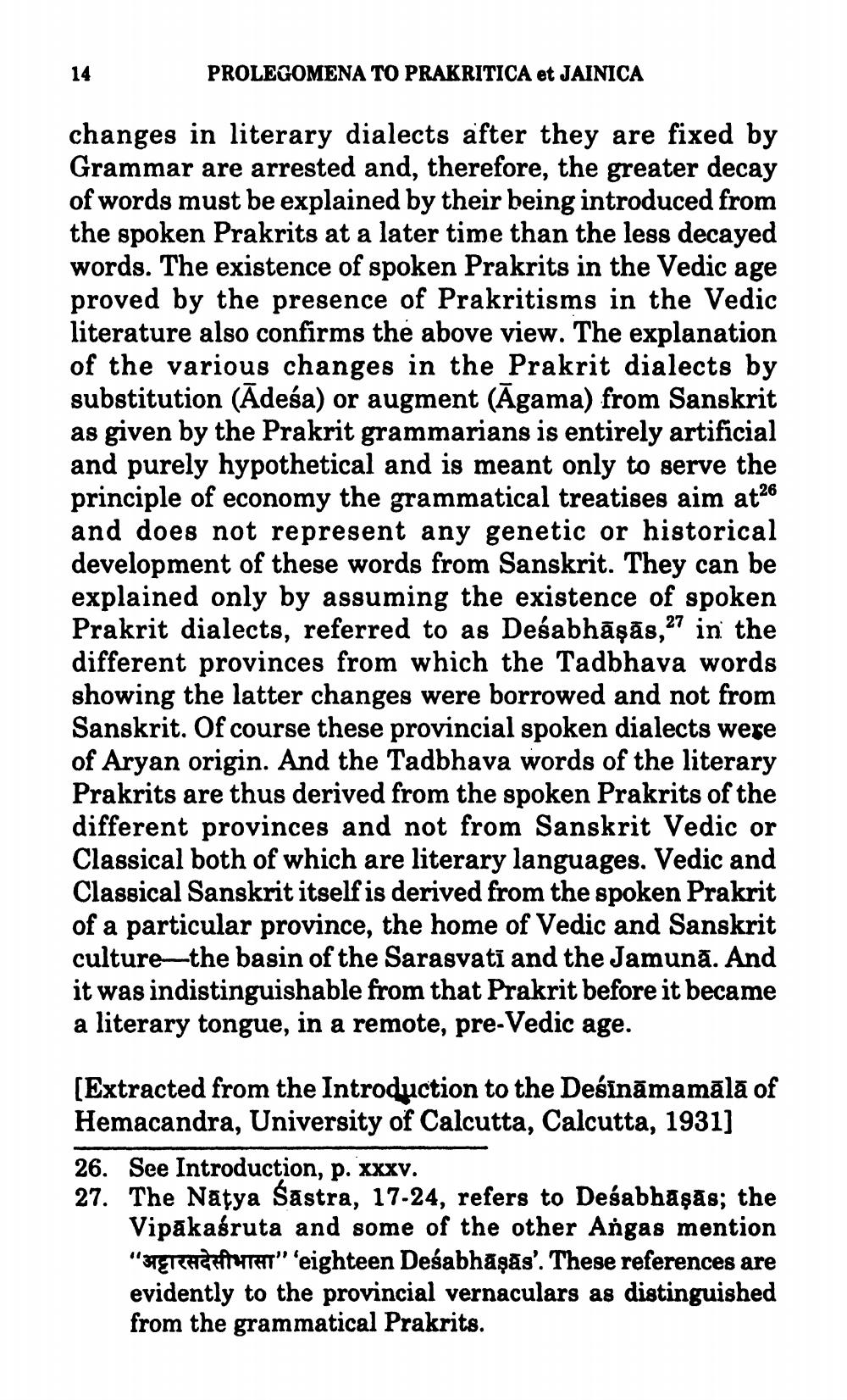________________
14
PROLEGOMENA TO PRAKRITICA et JAINICA
changes in literary dialects after they are fixed by Grammar are arrested and, therefore, the greater decay of words must be explained by their being introduced from the spoken Prakrits at a later time than the less decayed words. The existence of spoken Prakrits in the Vedic age proved by the presence of Prakritisms in the Vedic literature also confirms the above view. The explanation of the various changes in the Prakrit dialects by substitution (Adeśa) or augment (Agama) from Sanskrit as given by the Prakrit grammarians is entirely artificial and purely hypothetical and is meant only to serve the principle of economy the grammatical treatises aim at26 and does not represent any genetic or historical development of these words from Sanskrit. They can be explained only by assuming the existence of spoken Prakrit dialects, referred to as Deśabhāṣās,27 in the different provinces from which the Tadbhava words showing the latter changes were borrowed and not from Sanskrit. Of course these provincial spoken dialects were of Aryan origin. And the Tadbhava words of the literary Prakrits are thus derived from the spoken Prakrits of the different provinces and not from Sanskrit Vedic or Classical both of which are literary languages. Vedic and Classical Sanskrit itself is derived from the spoken Prakrit of a particular province, the home of Vedic and Sanskrit culture-the basin of the Sarasvati and the Jamuna. And it was indistinguishable from that Prakrit before it became a literary tongue, in a remote, pre-Vedic age.
[Extracted from the Introduction to the Deśināmamālā of Hemacandra, University of Calcutta, Calcutta, 1931]
26. See Introduction, p. xxxv.
27. The Natya Sastra, 17-24, refers to Deśabhāṣās; the Vipākaśruta and some of the other Angas mention "gradefter" 'eighteen Deśabhāṣās'. These references are evidently to the provincial vernaculars as distinguished from the grammatical Prakrits.




